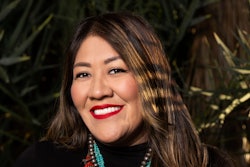The path to a top position of a big company often starts with an internship. Research has found that between 50-60% of interns become full-time employees, and former interns are retained at higher rates than others. But Black students are often left out: African Americans have been less likely to get paid internships than their white peers, and the lack of diversity in internship cohorts winds up being mirrored in executive boardrooms. In an attempt to break this cycle, the National Association of Colleges and Employers (NACE) is releasing a new report investigating employers’ understanding—or lack thereof— of equity in recruitment and offering ideas for how companies and Black colleges and universities can create mutually beneficial ties.
The report, done in partnership with the Center for the Study of Historically Black Colleges & Universities at Virginia Union University, is based on interviews with senior recruiters and leaders from 17 employers done between 2021-2022. It found that companies are experiencing some critical barriers to equity in recruiting.
Although corporate leaders broadly agreed with the idea of “diversity,” NACE’s researchers found that there was often a lack of unity around specific diversity goals and confusion about the differences between key terms like “equality” and “equity.”
 Dr. Joshua D. Kahn, associate director of research and public policy at NACE
Dr. Joshua D. Kahn, associate director of research and public policy at NACE
According to Kahn, one remedy is to elevate the person in charge of diversity projects to the C-suite. This way, he suggested, they can have sufficient perspective on the organization’s goals, resources, and obstacles.
“When they have that full view and the authority to execute the plan, then that plan can last as long as it needs to, and it won’t just change with news cycles that cause companies to change their priorities,” said Kahn.
The report also found that employers often don’t have relationships with HBCUs and predominantly Black institutions (PBIs) comparable to the ones they have with predominantly white schools (PWIs). Sometimes, according to Dr. Terrell L. Strayhorn, visiting scholar and director of the Center for the Study of HBCUs at Virginia Union University and a co-author of the study, corporations are not even aware of nearby Black schools.




















